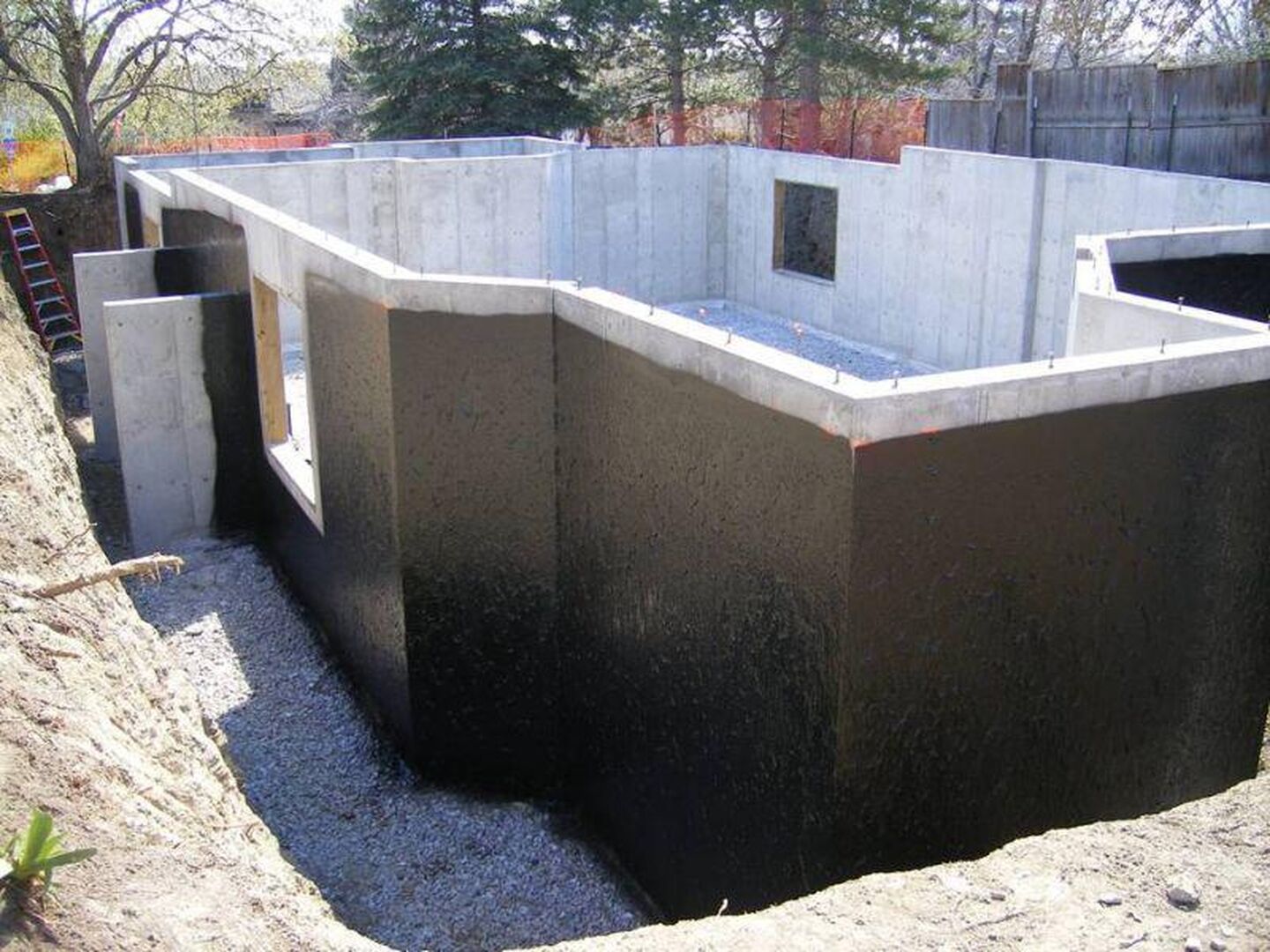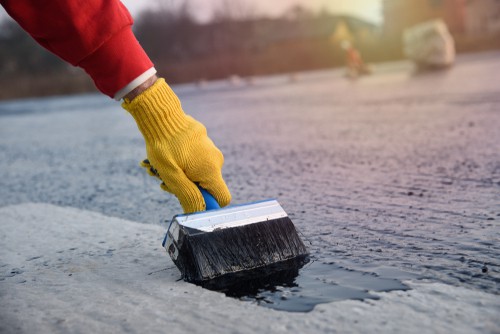Sorts of Waterproofing: Discovering the Different Approaches and Their Applications
Waterproofing is a crucial facet of building and maintenance. It shields structures from the destructive effects of water damage. There are numerous methods readily available, each with its unique applications and benefits. From membrane layer systems to cementitious options, understanding these options is important for reliable execution. The option of waterproofing technique can significantly impact sturdiness and longevity. Checking out these various methods exposes their distinctive advantages and prospective obstacles, motivating more consideration of suitable remedies.
Membrane Waterproofing Systems
Membrane waterproofing systems function as a crucial barrier versus water invasion in different frameworks. These systems commonly include thin sheets made from materials like rubber, thermoplastic, or asphalt, which are applied to surfaces to avoid moisture infiltration. They can be installed above or below quality and are particularly effective in areas vulnerable to high water exposure, such as cellars, roofings, and foundations.The setup procedure includes cleaning the substrate, applying adhesives or guides, and specifically fitting the membrane to ensure complete insurance coverage. Membrane systems can be either completely adhered, mechanically attached, or laid loose, depending upon the certain demands of the task. They offer sturdiness and flexibility, fitting architectural motions without compromising their waterproofing capabilities. These systems can be strengthened with extra layers for improved defense. Ultimately, membrane layer waterproofing systems are necessary for securing structures against water damage and keeping long-term integrity.
Liquid-Applied Waterproofing Coatings
Liquid-applied waterproofing coverings give a versatile option for safeguarding surface areas from water infiltration - Water Solutions. These coverings consist of fluid products that, when used, form a smooth, flexible membrane. Their adaptability enables application on different substrates, including concrete, metal, and timber. The coverings can be used in varied settings, from property to industrial settings, making them ideal for roof coverings, structures, and below-grade structures.One considerable advantage of liquid-applied layers is their capacity to satisfy irregular shapes and penetrate splits, creating a robust barrier versus dampness. They usually display outstanding bond properties and resistance to UV radiation, guaranteeing longevity and toughness. In addition, the application procedure is normally uncomplicated, enabling for quick installment and decreased labor expenses. This method additionally decreases the danger of water pooling, as the continual layer successfully guides water far from prone locations. Overall, liquid-applied waterproofing coverings are an efficient selection for detailed water defense
Cementitious Waterproofing Solutions

Cementitious waterproofing services supply a durable option for frameworks requiring reliable wetness protection. These systems mainly make use of a blend of cement, sand, and chemical additives to create a water-proof obstacle. They are usually put on surfaces such as concrete walls, foundations, and floorings, supplying a durable, durable defense versus water intrusion.One of the key benefits of cementitious waterproofing is its simplicity of application; it can be used using a brush, roller, or spray, making it ideal for numerous task dimensions. In addition, this approach works with several surfaces and can often be used combined with various other waterproofing techniques.Cementitious remedies are specifically reliable in environments where water direct exposure is a concern, such as basements or below-grade structures. Their outstanding adhesion residential or commercial properties guarantee that they bond well with substratums, offering a solid and impenetrable layer versus moisture penetration.
Bentonite Waterproofing
Bentonite waterproofing is a highly effective approach that uses salt bentonite clay to produce a natural barrier against water. This technique exploits the special properties of bentonite, which broadens upon call with water, securing any kind of possible leaks and avoiding wetness infiltration. It is typically used in different applications, including foundation walls, tunnels, and preserving wall surfaces, where water resistance is essential.Bentonite can be applied in a number of kinds, such as panels or coverings, providing convenience in installment. Its capability to self-seal makes it an attractive choice see for locations based on shifting soil or rising and falling water levels. Furthermore, bentonite waterproofing is environmentally pleasant, as it is a natural material that does not introduce harmful chemicals right into the surroundings.
Drain and Outside Waterproofing Systems
Efficient waterproofing typically includes a combination of techniques, including drainage and external systems. Drain systems, such as French drains pipes and sump pumps, are made to reroute water far from frameworks, lowering hydrostatic pressure versus foundations. These systems are necessary in preventing water build-up that can bring about architectural damage and mold and mildew growth.External waterproofing, on the other hand, includes using safety obstacles to the building's outside. Techniques such as the installation of water resistant membranes, coverings, or sealants can assist protect against water seepage. This technique not just shields the foundation yet additionally enhances the total durability of the structure.Together, drain and exterior waterproofing systems form a thorough solution to manage water efficiently. By executing these approaches, residential or commercial property proprietors can guard their financial investments against the destructive results of dampness, guaranteeing lasting security and safety and security for their structures.
Frequently Asked Concerns
Exactly how Do I Select the Right Waterproofing Method for My Job?
Selecting the ideal waterproofing approach depends on elements such as project type, environmental conditions, budget plan, and desired longevity. Evaluating these facets enables educated choices tailored to particular requirements and needs.

Can Waterproofing Be Applied in Cold Weather Issues?
Waterproofing can be used in cool weather conditions, however it requires specific materials and strategies. Cold temperatures may affect healing times and adhesion, requiring cautious selection of products created for low-temperature application.
What Are the Typical Signs of Waterproofing Failing?
Usual indicators of waterproofing failure include visible water stains, peeling off paint, moist smells, mold and mildew growth, and splits in walls or foundations. Foundation waterproofing Omaha. These indications recommend that negative waterproofing dampness is passing through the barrier, endangering its performance
Exactly How Lengthy Does Waterproofing Last Before Requiring Upkeep?
The long life of waterproofing differs, generally lasting in between 5 to ten years. Aspects such as worldly high quality, environmental problems, and maintenance practices affect its durability, requiring routine evaluations to assure effective protection against water invasion.
Exist Eco-Friendly Waterproofing Options Available?
The inquiry of eco-friendly waterproof patch waterproofing choices reveals an expanding rate of interest in lasting materials (Landscape drainage Omaha). Various natural substances, such as plant-based sealants and recycled items, provide effective remedies while minimizing environmental influence, attracting ecologically aware consumers